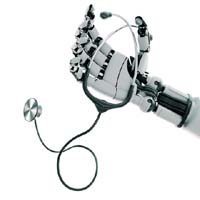Can Robotics Make Mesothelioma Surgery Safer?

A Chandler, Arizona man is recovering after becoming the second person in the world to undergo robotic surgery for mesothelioma.
Carlos Tarazon, a 67-year-old former construction worker, was diagnosed with malignant pleural mesothelioma after spending more than 20 years in the construction industry. He had exhausted his treatment options when he was referred to University of Arizona Medical Center thoracic surgeon Farid Gharagozloo, MD, who elected to perform robotic-assisted extrapleural pneumonectomy (EPP). Gharagozloo had performed the world’s first robotic EPP just days before.
Pleural mesothelioma invades organ membranes, the chest well, and, often, the lungs. EPP involves removing not only the diseased lung lining, but also the lung itself, portions of the chest wall, the membrane around the heart, and all or part of the diaphragm.
As an open procedure, EPP is considered the most dangerous type of mesothelioma surgery, carrying a high risk of complications and mortality. However, when combined with chemotherapy and/or radiation, it is also one of the most effective mesothelioma treatments, conferring longer survival times on patients who make it through the surgery. The medical community is, however, divided on whether the benefits of EPP outweigh the risks.
But EPP becomes considerably safer to treat mesothelioma when performed robotically. Instead of a large incision in the chest, the robotic system allows the doctor to operate through several smaller incisions. The doctor sits at a console to maneuver flexible instruments inside the chest cavity. Not only is robotic EPP more precise but, thanks to better visualization with high definition video, it is also less likely to miss any mesothelioma tissue. In addition, robotic surgery offers a reduced risk of blood loss and infection, as well as shorter hospital stays.
“It’s dramatic when you see the patient the next day,” Dr. Gharagozloo said in a University press release. “It’s the difference between a patient on a ventilator and a patient who is sitting there reading a newspaper.” Tarazon is reportedly now enjoying gardening again and is hoping to go hunting in the fall. Gharagozloo says he and his colleagues hope to “change the story of mesothelioma.”
Source:





